Syn.: Primula septentrionalis (L.) Kuntze
Family: Primulaceae Vent.

Distribution: Circumpolar species found in Europe, Asia and North America. North American distribution covers most of the continent from Alaska to Texas, however, it is absent in eastern part of US. It is most common species of Androsace in the western part of the continent and it is highly variable in morphology, depending on elevation, exposure, and light. Main morphological forms involve size of the rosette of leaves and height of the scapes.
Ecology: Open areas, sand, gravel, grasslands, shrub, forest, tundra and disturbed areas, from sea level to 3500 m. Blooms in spring.
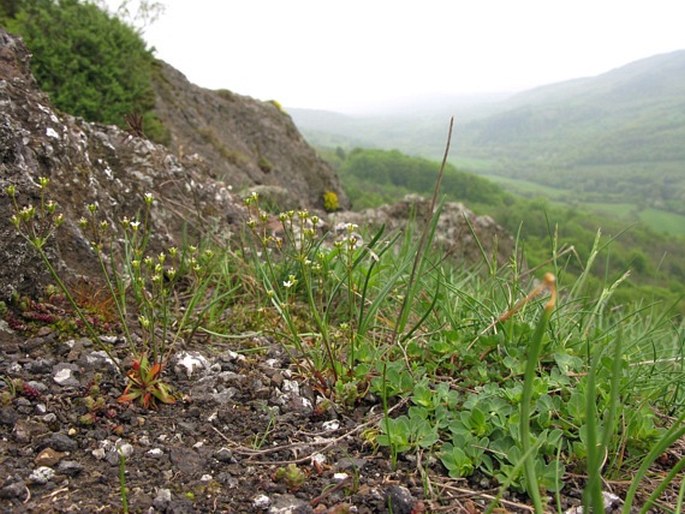
Description: Annual or biennial herb, variable in size from minuscule to moderately robust, not mat-forming. Leaves in a single rosette, petiole absent, blade oblanceolate to spatulate, 5–30 × 3–10 mm, base obscurely narrowing to stem, margins often ciliate, surfaces glabrescent to hairy, hairs straight. Peduncles 1–5, 1–10 cm tall, inflorescence 5–20-flowered, small narrow bracts; pedicels erect, slender, unequal, 0.3–6 cm; calyx campanulate, 3–5 mm; corolla tube shorter than calyx, 1–3 mm across, white or with yellow centre. Fruit is a capsule, 3–5 mm.
Threat and protection: The Pygmyflower Rockjasmine is protected by law in Czechia and Germany.
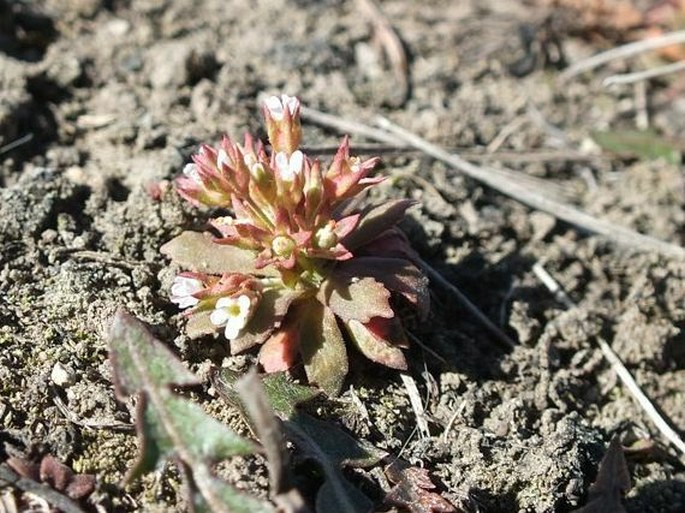
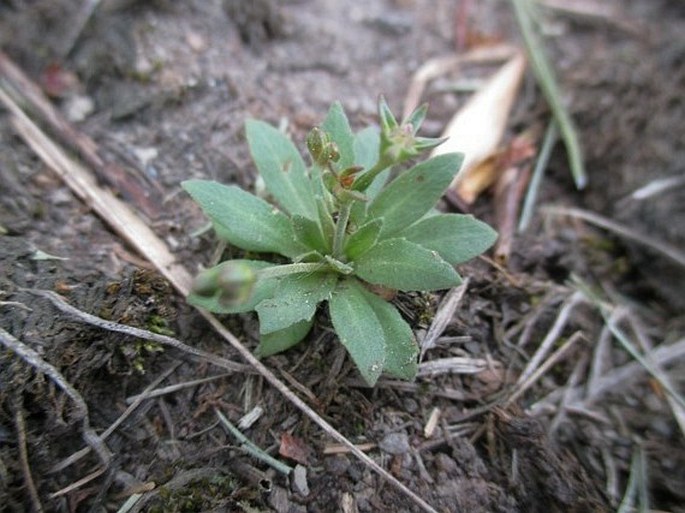
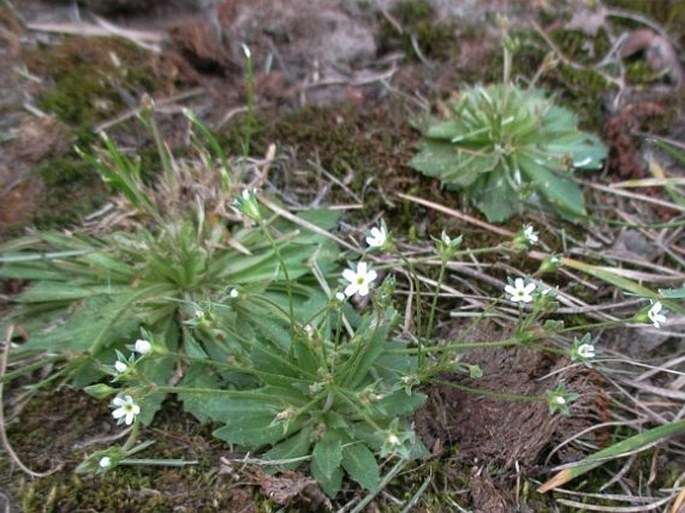
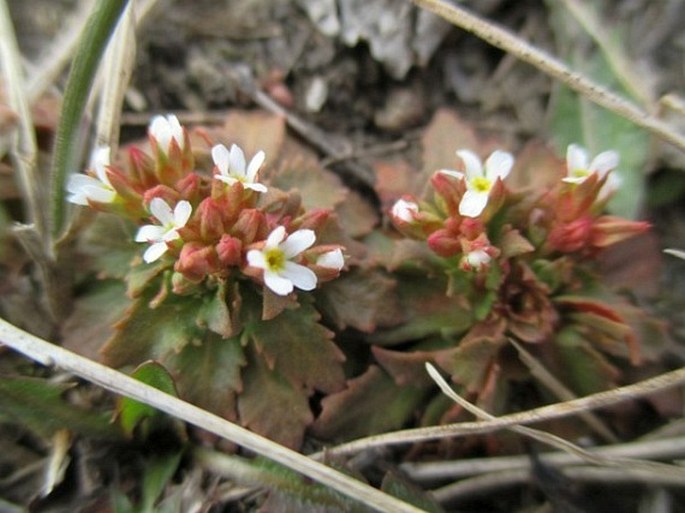
These images were taken in Canada, Alberta, Calgary, Rundle Area (by Karel Bergmann, May 2015) and Czechia, Bohemia, Rašovické skály (by Petr Krása, May 13, 2010).


